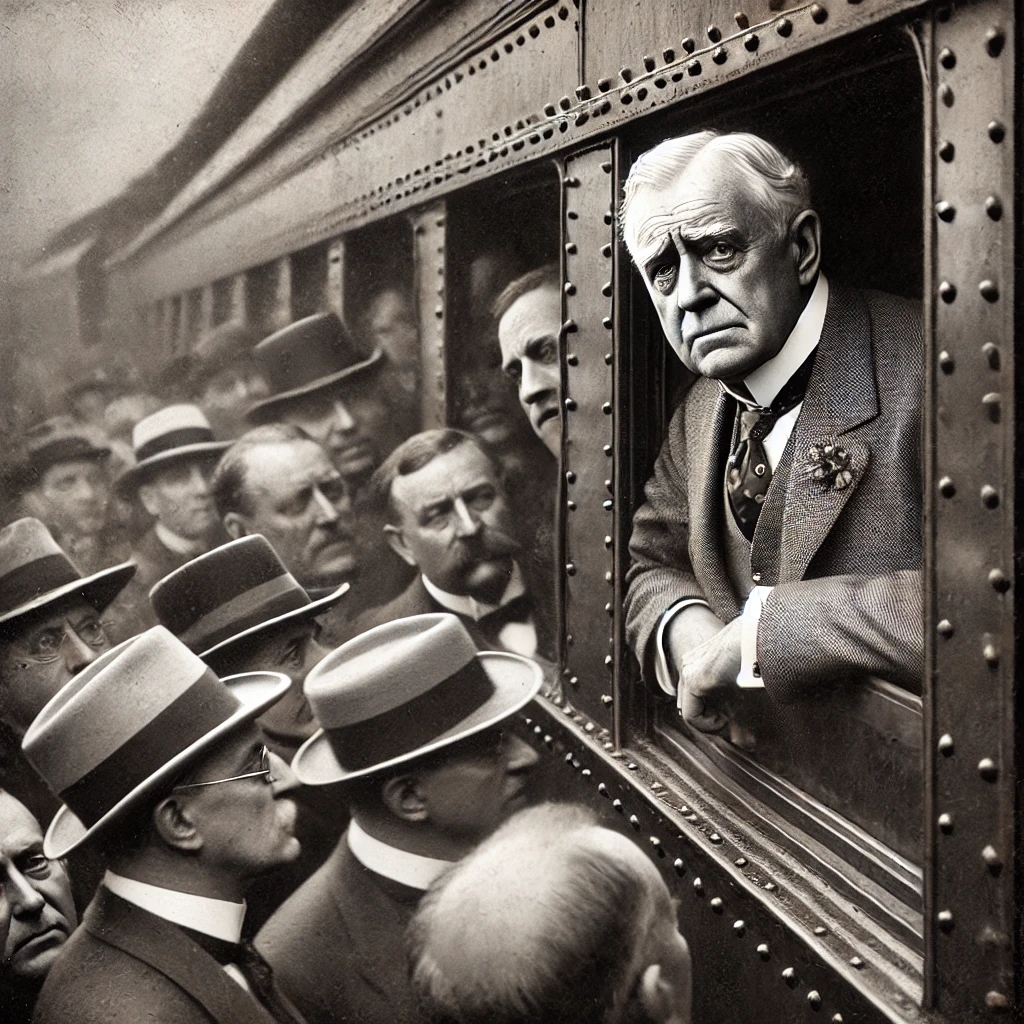On August 2, 1923, President Warren G. Harding passed away unexpectedly at the Palace Hotel in San Francisco. At the age of 58, Harding succumbed to a stroke while on a national tour that had taken him through Alaska and the West Coast. His sudden death shocked the nation, coming at a time when his presidency was already under intense scrutiny.
Harding’s health had been a concern throughout his presidency, with reports of his deteriorating condition surfacing in the months leading up to his death. Despite these warnings, the President continued with his travel plans, which some speculated was an attempt to escape the mounting controversies surrounding his administration. The tour, intended to boost public support and address criticisms, instead became a poignant backdrop to his untimely demise.
The Palace Hotel, where Harding spent his final days, became an iconic location in American history. The news of his death spread rapidly, and the country was engulfed in a wave of mourning and disbelief. Harding’s passing not only marked the end of his presidency but also set the stage for a significant political transition.

A Controversial Presidency
Warren G. Harding’s presidency was overshadowed by allegations of corruption and mismanagement. Although Harding was known for his affable demeanor and his call for a “return to normalcy” after World War I, his administration faced increasing criticism for its ethical lapses. The most notable scandal was the Teapot Dome scandal, which involved the illegal leasing of federal oil reserves to private companies.
The Teapot Dome scandal was emblematic of broader concerns about corruption within Harding’s administration. The Secretary of the Interior, Albert Fall, was found guilty of accepting bribes in exchange for the oil leases, leading to a significant legal and political fallout. This scandal, among others, tainted Harding’s presidency and cast a long shadow over his legacy.
Despite the growing scandal, Harding attempted to maintain a public image of stability and progress. His administration’s achievements were often overshadowed by the revelations of misconduct, leading to a complex and controversial legacy that historians continue to debate.

The West Coast Tour
Harding’s national tour, which included a visit to Alaska and several Western states, was part of his effort to connect with the American people and bolster his administration’s standing. The tour was intended to showcase Harding’s commitment to addressing national concerns and to rally support in the face of mounting criticisms.
However, the timing of the tour raised questions about Harding’s intentions. The growing rumors of corruption in Washington had reached a fever pitch, and some observers speculated that the tour was an attempt to distract from or evade the allegations. The tour’s ultimate outcome, marked by Harding’s sudden death, added an air of tragic irony to his final journey.
The Palace Hotel, where Harding died, became a symbol of the abrupt end to his presidency. The location of his death and the circumstances surrounding his final days have since become a point of historical interest, reflecting both the personal and political upheavals of his final moments.
Shock and Mourning
The immediate aftermath of Harding’s death was characterized by widespread shock and mourning. The President’s sudden passing was a dramatic and unexpected turn of events, leaving the nation grappling with both grief and uncertainty. Public reactions ranged from deep sorrow to relief, reflecting the complex legacy of Harding’s presidency.
The media coverage of Harding’s death was extensive, highlighting both his accomplishments and the controversies that marred his time in office. The public’s response was a mix of empathy for the loss of a leader and concern about the unresolved issues of his administration. This duality of sentiment underscored the turbulent period following his death.

The Legacy of Harding’s Presidency
The death of Warren G. Harding marked a turning point in American political history. Harding’s presidency, while significant in its own right, was overshadowed by the scandals and controversies that emerged during and after his time in office. The legacy of his presidency is a complex one, characterized by both his efforts to lead the nation and the challenges of corruption that defined his tenure.
Harding’s passing set the stage for a new era of leadership and reform. The subsequent investigations into the scandals of his administration led to important changes in the way federal officials were held accountable. These reforms aimed to restore public trust and address the ethical lapses that had marred Harding’s presidency.
In reflecting on this day in history, we are reminded of the impact of leadership on public perception and the importance of integrity in governance. The story of Warren G. Harding’s presidency and his sudden death serves as a poignant reminder of the challenges and responsibilities of public office.
